PBS News Story About Wolves
Hunting Wolves, Saving Wolves
Is the Obama Administration breaking its promise to protect endangered species?
Last year the Obama Administration removed federal protection from some of the wolves that had been restored to the northern Rockies under the Endangered Species Act. The move paved the way for controversial state-regulated wolf hunts.
Wolf advocates strongly oppose the administrations decision saying the three states in the region, Montana, Idaho, and Wyoming need a cohesive management plan that allows for a much larger wolf population. "It was very disappointing when Secretary Salazar in the Obama Administration, signed off on this rushed-through Bush administration delisting package for wolves," said Dough Honnold, a lawyer with Earthjustice, who is representing conservation groups challenging the government's decision.
The return of the gray wolf to the northern Rockies is considered to be the most successful wildlife reintroduction project in the history of the 27 year old Endangered Species Act. In 1995 and 1996, 66 gray wolves we relocated from Canada to Yellowstone National Park and central Idaho. Today there are more than 1,600 wolves in the region.
For its part the federal government says that just 300 wolves are needed for legitimate recovery in the region. "Wolves are back and there's plenty of them in plenty of places. They're never really going anywhere," said Ed Bangs, the Northern Rockies Wolf Recovery Coordinator for the U.S. Fish and Wildlife Service.
More than a dozen conversation groups have sued the Interior Department to return federal protection to the northern Rockies wolves. Some believe the result of this legal debate is a litmus test for the Obama Administration's overall approach to wildlife issues and the Endangered Species Act.
To read more, watch the video of this story, and vote in favor of protecting wolves, here is the link to it:
http://www.pbs.org/now/shows/609/index.html
Note To My Critics:
Tuesday, February 23, 2010
PBS News Story About Wolves
Posted by Denbeath at 9:41 PM 0 comments
Labels: aerial wolf hunting, save wolves
Monday, February 22, 2010
Finch Fighting
Paul Wachter Contributor
(Feb. 22) -- America's more-unsavory pastimes have long included underground cockfighting and dogfighting scenes, but now reports point toward a new animal-cruelty trend: finch fighting.
Last week, Massachusetts authorities seized more than 20 of the birds -- 6-inch "little bursts of yellow" as described by The Boston Globe -- after a home inspection in Ashland, a small town about a half-hour's drive from Boston. More than 20 Brazilian men were at the house, and some were detained by immigration authorities.
The raid recalled the arrests in Connecticut last summer of 19 Brazilians involved in a bird-fighting ring, and indeed, the similarities are no coincidence: Despite being banned 20 years ago in Brazil, canary fighting, as it's commonly called, remains popular in the country. And according to Ashland Police Department Sgt. Greg Fawkes, it's spreading in the United States. "This is a lot bigger than anyone thinks," he told the Globe. "I think it's rampant. I really do.''
a male finch sings to attract the company of female birds
Seth Wenig, AP
A male finch tries to attract the company of female birds at a breeding facility in New York last year.
In 2007, dogfighting generated national headlines after NFL quarterback Michael Vick was implicated by a raid on his property that uncovered numerous instances of animal abuse. And it wasn't until that same year that Louisiana became the last state to outlaw cockfighting. But the latest news from Massachusetts -- of male finches trained to peck each other's legs off in bloody cage battle -- is a reminder that such dark impulses have other outlets.
Humans have practiced animal fighting since ancient times. Both Henry VIII and Queen Elizabeth I, for instance, liked to watch bearbaiting, in which a chained bear would fight a pack of dogs -- a practice that continues in some parts of Pakistan (disturbing video here). Bullfighting continues to fill stadiums in Spain and Latin America.
For animal fighters, the small size and seeming docility of the finches, which are generally known for their song, make it easier to hide their practices than when staging battles between dogs or chickens. Still, finch fighting mystifies many who monitor animal cruelty. "It takes a special mind to put canaries together and fight them for sport," said a Connecticut zoo director after last year's raid in that state. "It's the kind of thing that boggles the mind." Added Laura Maloney, senior vice president of anti-cruelty for the American Society for the Prevention of Cruelty to Animals: "This is the first time we've heard of this."
Any accounts of animal fights quickly pivot into broader ethical questions. For example, footage of animals fighting in nature, unprodded by humans -- either on a nature channel or at Web sites like this one -- draws a steady audience. Diners eat animals, either by hunting them themselves or, in most cases, purchasing them from a restaurant or grocery store. After the Vick case, law professor and ethicist Gary Francione wrote that it demonstrated "our 'moral schizophrenia' about animals" and that "the animals we eat suffer as much as the dogs that are used in dogfighting." According to another professor who's studied cockfighting, "Gamecocks live an exemplary life compared to a McDonald's chicken."
But we don't normally eat finches -- by contrast, some owners cook for their birds. And by all accounts the finches in Massachusetts were mistreated, kept hungry and thirsty even before they were prodded into deadly battle. Which is why finch fighting carries an extra dose of repugnance: Free of the ambiguity that can follow other forms of animal cruelty, it has an elemental shock value that even reports of a pit bull-torturing NFL quarterback cannot quite match.
Filed under: Nation, Crime

Posted by Denbeath at 8:04 PM 2 comments
Friday, February 19, 2010
Monsanto ~ Genetically Modified Crops ~ Insecticides ~Health Risks ~Everything You Need To Know
Three types of Monsanto genetically modified corn are under scrutiny in the wake of a new study published by the International Journal Of Biological Sciences which found that rats ingesting the corn were subject to statistically significant amounts of organ toxicity. These three types -- Mon 863, insecticide-producing Mon 810, and Roundup® herbicide-absorbing NK 603 -- have been approved for consumption in the US and several countries in Europe.
The finding that corn produced by one of the world's agricultural giants could cause organ failure has been met with obvious concern by food activists and consumers alike. It's not the first bout of negative publicity for Monsanto, which has been vilified for everything from producing Agent Orange, intimidating farmers, using aggressive tactics to squeeze out competition, pressuring farmers to be dependent on their products, and strongly promoting the use of genetically modified seeds here and abroad. It has been negatively portrayed in films such as "Food, Inc." and "The World According To Monsanto".
While some groups like Change.org, see this study as a rallying cry for regulatory action and boycott, others on both sides of the GMO issue think the study results itself are not clear and shouldn't be accepted wholeheartedly. The IJBS is not a peer-reviewed journal, and the work was not an independent analysis of the effects of the GM corn on rats. Rather, it was a full interpretation of all of the samples of rats in the 90-day study that Monsanto itself sponsored. After analyzing the data, the European researchers came to the conclusion:"Effects were mostly concentrated in kidney and liver function, the two major diet detoxification organs, but in detail differed with each GM type. In addition, some effects on heart, adrenal, spleen and blood cells were also frequently noted. As there normally exists sex differences in liver and kidney metabolism, the highly statistically significant disturbances in the function of these organs, seen between male and female rats, cannot be dismissed as biologically insignificant as has been proposed by others. We therefore conclude that our data strongly suggests that these GM maize varieties induce a state of hepatorenal toxicity.[...] These substances have never before been an integral part of the human or animal diet and therefore their health consequences for those who consume them, especially over long time periods are currently unknown."
Discover notes that Greenpeace, an activist environmental group sponsored the scientists' research -- they had to sue to obtain the raw data in the first place, and that the IJBS is relatively obscure. Leading nutrition professor Dr. Marion Nestle wrote on her blog about the study, "I found the paper extremely difficult to read, in part because it is written in exceptionally dense and opaque language, and in part because it presents the data in especially complicated tables and figures." Monsanto claims that the study employed "non-traditional statistical methods to reassess toxicology data from studies conducted with MON 863, MON 810 and NK603 corn varieties" and that the IJBS paper reaches "unsubstantiated conclusions."
The IJBS study itself strenuously suggests more testing over two years rather than 90 days to evaluate the long-term health impacts, and by independent researchers rather than Monsanto itself. The study also points out that Monsanto conducted the study only once rather than multiple times, and only tested one species -- rats -- and emphasizes that testing on more mammals of this GM maize is needed to reach any kind of conclusion on safety. This maize is used as both animal feed and for human consumption.
According to the FDA's website, the agency concludes that genetic engineering that occurred in the maize varieties, MON 810, NK603, MON 863 was not different enough from past approved products and did not need a pre-market review. The FDA essentially takes Monsanto's word that the company had done adequate testing to ensure its safety, as shown clearly in this letter. Several countries in Europe, such as Germany and France, have recently banned GM crops, specifically MON 810 after it had been approved for consumption in the European Union.
Furthermore, there are no laws requiring companies to label if their products contain GMOs. Even food labeled "Organic" that is processed with multiple ingredients must only be 95% organic, leaving loopholes for obscure ingredients that are genetically modified to be included. HuffPost Blogger and Eco Etiquette columnist Jennifer Grayson has written a comprehensive article detailing the ways to avoid genetically modified foods in light of the fact that there are no labeling requirements in the US.
So the facts are as follows: We eat corn and corn derivatives that have been genetically modified, which has been banned for being unsafe in other countries -- the FDA has not done independent testing on the health effects of at least three types of corn that we are eating, and have instead taken Monsanto's word for the fact that they are safe. Monsanto resisted releasing their data to independent researchers -- environmental groups had to sue to get it. Once it was released and analyzed by one group of scientists, they wrote a dense study in a non-peer reviewed journal and found statistically significant amounts of organ failure in the rats in Monsanto's own study. Consumers often have no way of knowing clearly if they are eating genetically modified food.
The FDA did not return calls for comment.

Posted by Denbeath at 2:24 PM 0 comments
Bad Dog Food Ingredients to Avoid
Bad Dog Food Ingredients to Avoid
By: Jane Dinunzio
What do they mean by fillers?
Used in low quality, cheap commercial dog foods, fillers are basically put in the dog's "food" to save the manufacturer money, not to increase nutritional values. Included are products that are not edible and difficult for our pets to digest such as: cereal byproducts, - cottonseed hulls, - crushed peanut shells, - straw, - corn and crushed corncobs, - weeds, and - feathers.
A cheap dog food filled with corn fillers, listed as corn, corn meal, and corn gluten meal should be avoided as this is used as substitute for higher quality animal protein sources.
Fillers that are used are not just tasteless, but actually can hurt your pet as they cause digestive problems and horrible allergies. They can cause digestive problems, allergies, and in immune deficient puppies or older pets can cause severe medical problems. .
What is a by-product?
Found in cheap dog food, meat by-products are euphemisms for parts of animals that wouldn't be considered edible by any smart consumer. Meat by-products actually do not contain meat. By-products are part of the animals that are left over after the meat has been stripped away from the bone. This disgusting cheap dog food mishmosh would then include heads, feet, entrails, hoofs,lungs, spleens, kidneys, brains, stomachs (still with undigested food inside) bones, blood (some with hormones and medications included) intestines and loads of other carcass parts that are not fit for human consumption.
Also, the boiled down flesh of road kill, zoo animals, and 4-D (dead, diseased, disabled dying) livestock is considered okay with these manufacturers. This also can include dogs and cats that have been euthanized. Avoid dog food with blood meal, which is an inexpensive protein booster. The animal source is usually not stated, and the blood can be contaminated with residues of hormones, or medications.
What is a non-specific meat source?
If the main protein source is listed as "meat" this is to be avoided, It is always mystery meat such as: spoiled rotten meat from the grocery store (Styrofoam wrap and all), - Road kill that has been rotting on the roadside, - heads, feet, skin, hair, feathers, carpel and tarsal joints, and mammary glands are used from the slaughterhouses. Animals that have died from diseases, cancerous tissue and all, - tumors and worm infested organs are also rendered. Injection sites are rendered, blood clots and all. Stomach and unclean bowels are rendered. Contaminated material including blood is rendered. Carcasses with high levels of drugs or pesticides in excess of limits prescribed under the FDA (not fit for human consumption) are rendered.
Everything is pitched into large vats and slowly ground, then cooked at low temps till the grease rises to the top. And consider that this is what is listed on the ingredient list as "animal fat". The rest of what is remaining is then pressed until the moisture is completely removed, and this dry raw material that is referred to as "meat", is then used in the cheap dog food brands.
Why are artificial colors, preservatives and flavors used?
Flavor is added, because most pets wouldn't eat the finished product without some sort of cover up for the horrible smell. These additional flavors are usually from rancid restaurant grease. This grease sometimes sits in dumpsters, out in the sun for weeks. This is what the pet food manufacturers buy to add as flavoring, which is sprayed onto the kibble. Also sugar or corn syrup is used to cover up the bad taste of the inferior kibble.
Different dyes are used to make the food look good to us, the pet owner. Dyes are known carcenogenic causing additives, and I'm quite certain my pet, or yours, does not care what color their food is.
Artificial preservatives are used to extend the shelf life of the dog food. The main ones to avoid are: BHA (butylated hydroxytolulene), propyl gallate, propylene glycol (also used in automotive antifreeze, and is suspected of causing red blood cell damage) and ethoxyquin. These are all potentially cancer causing agents that your pets are eating every day.
This all sounds pretty grim, but rest assured there are many extremely excellent, ultra premium organic dog foods now being manufactured without any of the above crap in them. These highly reputable and conscientious companies have philosophies aimed at providing you and your pet the best of the best when it comes to nutrition and peace of mind.
A lot of pet owners are also now making their own all natural dog food at home, and this is always better than the junk the commercial pet food manufacturers are feeding our pets. It is easy, and comparable in price to buying the premium organic dog food brands, as long as you use a proper nutritionally balanced dog food recipe. You can easily find very good dog food recipe books for sale, that have well rounded nutritious meals to make at home. Also you will be able to find recipes online.
Whatever you choose for your pet, remember we speak for them, and choose the best for them that you are able to give.
About the Author
To find out if your dog's food is excellent, good or plain dangerous, try this test here and see what mark it gets.
(ArticlesBase SC #629578)
Article Source: http://www.articlesbase.com/ - Bad Dog Food Ingredients to Avoid
Posted by Denbeath at 12:22 PM 0 comments
Sunday, February 14, 2010
The Sheer Terror of Slaughter ~Meat Eaters Ingest
"I woke up in the middle of the night after dreaming about cows dangling from ropes tied around their hind legs. The animals moved slowly down the line, twitching as the life ebbed out of their bodies, blood spurting from gashes in their necks delivered moments earlier by a man
wearing a bloodstained smock.
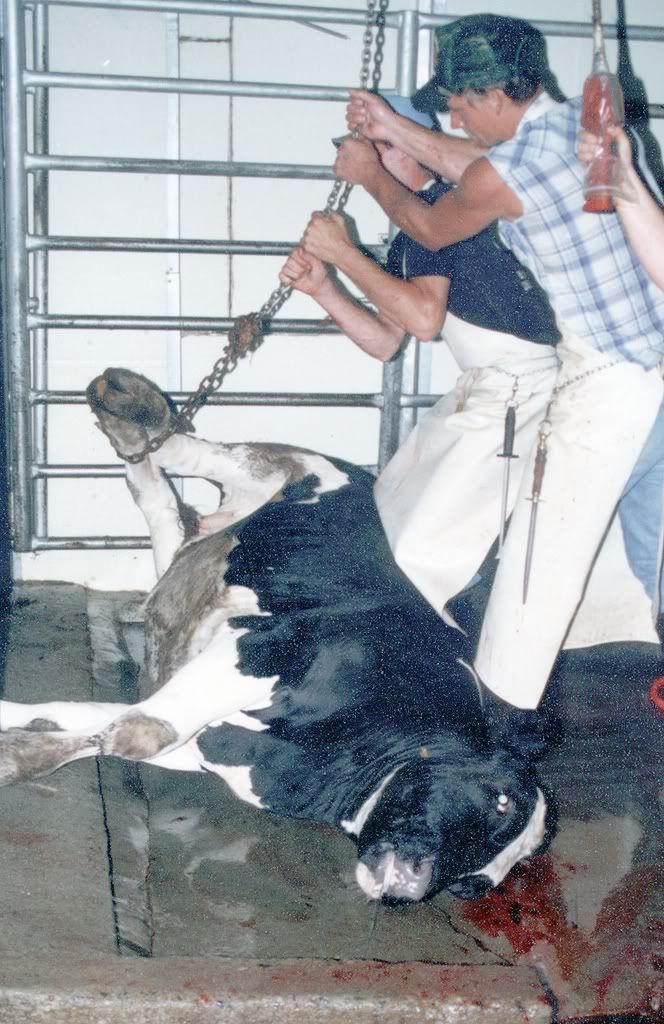
Occasionally, there would be an animal, still alive, mooing loudly and
shaking spasmodically, seeking a way to escape. In my dream, one animal
made eye contact with me, her eyes bulging, wild with pain and fear.
Once awake, I envisioned their enormous udders, some still filled with
milk. White creamy discharges mix with dark red blood and feces,
dripping from lifeless carcasses to the concrete floor. I imagine the smell of the slaughterhouse... A thought comes into my mind. What happens to the flesh on their faces, cheeks, lips, and eye sockets?
What happens to the anus? What happens to the udder? Do these body
parts become a cruel joke for Ronald MacDonald? Do you really "deserve
a break today" or desire to "have it your way?"
I was reading truths about how pigs met their death.
"These hogs get up to the scalding tank, hit the water, and just start
screaming and kicking.I'm not sure whether the hogs burn to death
before drowning. The water is 140 degrees. I do not believe the hogs go into shock, because it takes them a couple of minutes to stop thrashing.

I think they die slowly from drowning."
"When a conscious cow arrives at the first hind-legger, usually the
legger tries to make a cut to start skinning out the leg.
Unfortunately, it is very difficult and dangerous to do that when an
animal is kicking violently. So the legger will cut off the bottom part
of the animal's leg he's working on with a pair of clippers.
"
Her book does a remarkable job of exposing the cruelty applied to 8
billion farm animals each year. Each one dies a painful death.
Killers become so used to the act of killing that these animals are treated with great disdain.
Sometimes they are brutally tortured before and during
death.
Robert Cohen
Executive Director
Dairy Education Board
NotMilk.com<>
Slaughterhouse:.. The Shocking Story of Greed, Neglect, and Inhumane Treatment Inside the U.S. Meat Industry
"When we tell ourselves we're eating meat from "humanely raised animals," we're leaving out a huge part of the equation. The slaughtering of an animal is a bloody and violent act, and death does not come easy for those who want to live."
" Colleen Patrick-..Goudreau
Posted by Denbeath at 6:54 PM 1 comments
Labels: animal abuse, slaughter, slaughter house
Humans kill around 100 million sharks every year
Thank you!
Phil
Every year Sharks kills between 5 and 10 humans
Humans kill around 100 million sharks every year
..
Youtube Source
Conservative estimates reckon that between 30 to 70 million sharks are killed annually in
commercial and recreational fisheries, and some conservation organisations put that figure
closer to 100 million.

Sharks are killed for a whole manner of reasons, their meat is used for food, fins for soup,
cartilage in health supplements, livers for oil, skin for leather and teeth for curios, some are
even killed for the sheer pleasure of it.
And demand is increasing. As whitefish stocks have collapsed, previously unprofitable shark
fisheries have become commercially viable and shark meat more acceptable.
Even in the most optimistic of scenarios this slaughter cannot be sustained. Sharks do not
produce huge numbers of eggs like other fish, their young are either born live or in egg
cases, and the average brood is only about 12 pups.
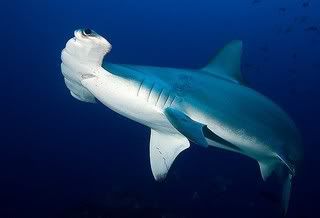
Sharks first appeared on earth some 400 million years ago, before land vertebrates
and before many plants had colonised continents. Modern sharks, such as the mako and the
porbeagle, are regarded as living unchanged from the species we see today, 100 million
years ago. The oldest great white shark teeth date from about 65 million years ago, around
the time of the extinction of the dinosaurs.
The fact that present-day sharks have not changed substantially for the last 100 million years
suggests that they may have attained a level of evolutionary perfection that is unmatched by
any other animal. And yet during the last 20 years alone humans have done more harm to
sharks than had been done in the previous 100 million years,with some species of
shark declining by 90%. It would be sadly ironic that having survived the extinction of the
dinosaurs sharks may well disappear from this planet for the sake of a rather tasteless soup.
Humans have been responsible for the extinction of a single species of animal in the past,
but never have a whole order been endangered as we see with sharks. In barely the time it
has taken to set up and establish a cohesive shark conservation strategy we are in danger of
losing one of the most iconic and evocative animals this planet has ever known.
Shark fishing is mostly unregulated, and conservation measures have been too slow in
coming, but we can act now individually. If you see a Chinese restaurant selling shark fin
soup, or a health food shop selling shark supplements, or a shop selling shark meat, or a
media piece showing a sports fisherman with his dead shark trophy, take five minutes of
your time to tell them that this is totally unacceptable.
As apex predators, sharks play an important role in the ecosystem by maintaining the species below them in the food chain and serving as an indicator for ocean health. They help remove the weak and the sick as well as keeping the balance with competitors helping to ensure species diversity.
An ocean would not be an ocean without sharks, as predators, they shift their prey’s spatial habitat, which alters the feeding strategy and diets of other species. Through the spatial controls and abundance, sharks indirectly maintain the seagrass (link) and coral (link) reef habitats. The loss of sharks has led to the decline in coral reefs, seagrass beds and the loss of commercial fisheries.
Life on earth depends on life in the sea which sits below sharks in the food chain. Phytoplankton (tiny plants) are the greatest consumer of carbon dioxide (global warming gas) on earth, turning it into oxygen, providing us with 70% of the oxygen we breathe. Removing sharks is cutting off the head of the most important ecosystem for our own survival on earth. The biggest issue in any global warming debate is life in the oceans that allows life on land to exist, yet it's never spoken of all we hear about is industry and carbon footprints.
We are on the brink of losing an animal that unlike others perhaps, we as humans,
really cannot afford to lose this time.
Make a Difference: See SHARKWATER!

SHARKWATER
Project Shark Fin NZ

Sharks are considered to be an apex predator, meaning that as a species they are on the
top of the marine food chain. There is however an even more deadly predator,
OURSELVES! Sharks are a key bio- indicator of the health status of our marine eco-system,
and are part of the delicate and tenuous balance that exists.
It is predicted that if over exploitation, coupled with lack of shark conservation continues at
current levels it is widely believed that many species will become extinct by year 2028.
However this is disputed by a few, as there never really has been an actual record of the
number of sharks in the first place.
The clear and simple FACT is that the explossion in demand for shark fins has drastically
reduced the global numbers of all the top species. It is lso a fact that at current fishing levels
this is NOT sustainable fishing.
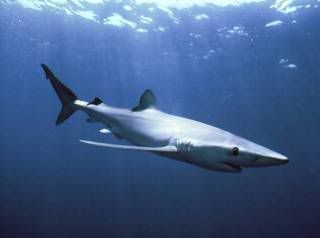
Please watch videos closely and imagine that someone had cut your spinal cord or tied your
arms and legs tightly together, leaving you to endure a slow and painful death. This is exactly
what has happened here, these sharks have been cut and all this does is immobilize the
shark to die very slowly.
Youtube Source
Youtube Source

About Project Shark Fin NZ
Here at Dive Planet we are very supportive of Project Aware and the great work that they do,
and have an association through Coastal Aware Projects, i.e. monthly coastal clean ups. The
time has come where we believe that awareness of shark finning and shark fin products must
be openly publicised. Due to our relatively small population New Zealand is often used as a
test bed for topical social issues, Dive Planet proposes that shark finning and shark fin
products be outlawed, initially in New Zealand and eventually globally.
The Project Shark Fin Campaign
PSFNZ wants Shark Finning STOPPED in NZ with huge fines impossed to any person or
company dealing in the Trade of NZ Shark Fins.
PSFNZ wants a TOTAL BAN on the importation of Shark Fins including other products that
are processed from Shark Fins.
PSFNZ will protest all eateries that support the Slaughter of Sharks for their Fins. Will will
Blacklist these eateries for all to see and avoid.
PSFNZ wants everyone to boycott Restaurants and Suppliers of Shark Fin Products.
PSFNZ will make this barbarrick practice known to all New Zealander's that are unaware of
the slaughtering that is occuring in our Country along with the dangers of New Zealand
allowing the Trading of Shark Fins.
PSFNZ wants everyone to voice to government departments the need to stop the slaughter
and save our Oceans before it is too late. Tourism in NZ will suffer for our allowance of Shark
Finning.
Sharks and By—Catch
Looking at the number of sharks that are caught on Longlines or in commercial nets as a
by—catch, should the sale of these sharks’ fins be allowed. We would like to get the
viewpoints of anyone including commercial operators that wish to pass comment. Please
send your opinions to paul@diveplanet.co.nz
PSFNZ Opinion By—Catch
It is the opinion of PSFNZ that all sharks that are caught as By—Catch should either be taken
whole or left out at sea whole. Sharks that are returned whole by the fishermen should be
utilized if they can be. We strongly feel that the fins of these sharks should not ever be sold or
traded as this is opening a wide loophole for the Trading of Shark Fins, the very cause we
want to eliminate. To many this may seem a waste but how can we STOP Shark fin trading if
we have loopholes that can be exploited.
Urgent Research Needed
There is an urgent need for more research into shark populations in New Zealand waters.
Without vital information on shark numbers, population trends and breeding patterns, we
simply do not know that the number of sharks being caught is sustainable. Until we have this
information the commercial fishing quota for shark species should be zero.
This video above shows examples of Shark diving and how the sharks should be in
their natural environment
Footage is courtesy of Andrew Fox. Paul Morris filmed with the Fox Experience in the
making of Animal Planets episode Your Worst Animal Nightmares Sharkbait. Here Paul
gained valuable information about sharks in general especially the Great White shark. The
Great White is also a threatened species.
Shark diving is another way countries can benefit greatly with tourism dollars without
needlessly slaughtering sharks for a quick buck. Support Project Shark Fin NZ and ensure
your future generations can experience the beauty of these mighty predators that we everso
depend on, to keep an equal balance in our marine ecosystem.
Please sign the Project Shark Fin NZ Petition
How you can help Project Shark Fin NZ, click HERE
SHARKS LINKS
Click HERE
to check the the list of sites selling shark fins and derivatives on Riley's blog.
Write to the sites to tell them the selling of shark products is a direct contribution to the destruction of our own ecosystems.
Les seigneurs de la mer
Shark Alliance France
Shark Alliance
Shark Alliance Video : Predator turned Prey
Youtube
Source
SHARKWATER
Stop shark finning
South Florida Student Shark Program
Guy Harvey Ocean Foundation
Wyland Foundation
Iemanya Oceanica
Shark Angels
Animal Welfare Institute
Oceanicallstars..
Shark Savers
Elasmodiver
Oceana
Ocean Conservancy
Blue Voice
Bite Back
Sea Shepherd France
Sea Shepherd
Conservation Society
PEW Trusts
Neil 4 Sharks
Year of the Shark
Sharkmans World
Protect the Sharks Foundation
Shark Foundation
Wild Aid
Sharksafe
IUCN Shark Specialist
Group
Lenfest Ocean Program
Remove the nets
Watch Conservation Internationals new marine video
to learn just how much we owe to these vast habitats,
and why we must act to save them before its too late..
OCEANS the next movie of Jacques Perrin
Nearly three-quarters of the earth's surface is covered by oceans.
French co directors Jacques Perrin and Jacques Cluzaud have set out to capture the full
expanse of these waters that have played such a crucial and constant role in the history and
sustenance of man.
The deep and abundant oceans are places of great mysteries and dangers that this film will
dare to explore.
Domestic release January 27th 2010 France
~~Oceans Trailer ~~
Disneynature Director: Jacques Perrin, Jacques Cluzaud
..
Youtube Source
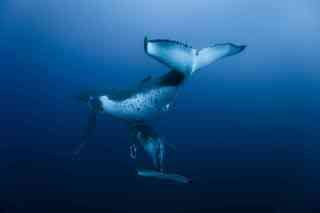
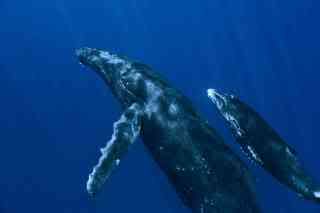
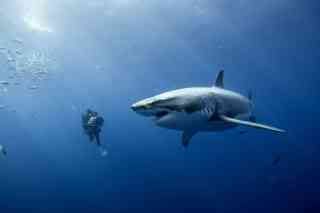

Jacques Perrin
OCEANS the next movie of Jacques Perrin
OCEAN THE MOVIE OFFICIAL WEBSITE in French
Disney Nature OCEANS
In Theaters April 22, 2010
Click to see all Phil's bulletins
Posted by Denbeath at 6:29 PM 0 comments
Labels: shark finning, sharks













